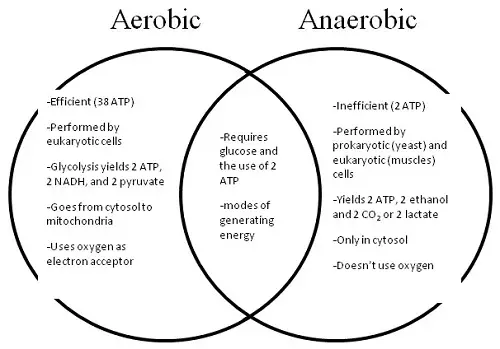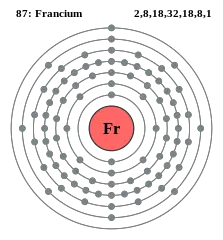
While electrophiles and nucleophiles are distinct entities in organic chemistry, they share commonalities in their reactivity patterns, contributing to the intricacies of chemical reactions. This exploration unveils the shared characteristics between electrophiles and nucleophiles, highlighting their crucial roles in driving organic transformations.

1. Reactivity Toward Electron-Rich Regions:
- Electrophile: Seeks electrons and is reactive towards electron-rich regions. Electrophiles often act as electron acceptors during chemical reactions.
- Nucleophile: Donates electrons and is reactive towards electron-deficient regions. Nucleophiles act as electron donors in various chemical reactions.
2. Participation in Polar Reactions:
- Electrophile: Participates in polar reactions, where there is an unequal sharing of electrons. Electrophilic reactions involve the attack on regions of high electron density.
- Nucleophile: Also engages in polar reactions, typically attacking electron-deficient sites. Nucleophilic reactions involve the donation of electrons to regions with lower electron density.
3. Role in Addition Reactions:
- Electrophile: Often involved in electrophilic addition reactions, where an electrophile is added to a molecule with unsaturation.
- Nucleophile: Participates in nucleophilic addition reactions, where a nucleophile adds to a molecule, usually across a double bond.
4. Importance in Substitution Reactions:
- Electrophile: Plays a crucial role in electrophilic substitution reactions, where an electrophile substitutes another group in a molecule.
- Nucleophile: Similarly, contributes to nucleophilic substitution reactions, replacing a leaving group with the nucleophile.
5. Reactivity Controlled by Functional Groups:
- Electrophile: The reactivity of electrophiles is influenced by the presence of electron-withdrawing groups, enhancing their electrophilic character.
- Nucleophile: The reactivity of nucleophiles is affected by the presence of electron-donating groups, augmenting their nucleophilic character.
In conclusion, recognizing the shared reactivity patterns between electrophiles and nucleophiles is essential for understanding the broad spectrum of organic reactions. These commonalities form the foundation for predicting and rationalizing the behavior of different functional groups in diverse chemical transformations.
Here’s a comparison table highlighting the similarities between electrophiles and nucleophiles in organic chemistry:
| Aspect | Electrophile | Nucleophile |
| Reactivity | Reactive towards electron-rich regions. | Reactive towards electron-deficient regions. |
| Polarity | Participates in polar reactions, accepting electrons. | Engages in polar reactions, donating electrons. |
| Role in Addition Reactions | Involved in electrophilic addition reactions. | Participates in nucleophilic addition reactions. |
| Role in Substitution Reactions | Crucial in electrophilic substitution reactions. | Contributes to nucleophilic substitution reactions. |
| Functional Group Influence | Reactivity influenced by electron-withdrawing groups. | Reactivity affected by electron-donating groups. |
This comparison table provides a concise overview of the shared characteristics between electrophiles and nucleophiles, emphasizing their reactivity patterns and roles in various types of organic reactions.
FAQ: Electrophiles and Nucleophiles
Q1: What is the primary distinction between electrophiles and nucleophiles?
A1: The primary distinction lies in their reactivity. Electrophiles are electron-deficient species that accept electrons during reactions, while nucleophiles are electron-rich species that donate electrons.
Q2: Do electrophiles and nucleophiles both participate in polar reactions?
A2: Yes, both electrophiles and nucleophiles engage in polar reactions, contributing to their role in organic chemistry. Electrophiles react at regions of high electron density, while nucleophiles react at electron-deficient sites.
Q3: Can electrophiles and nucleophiles both be involved in addition reactions?
A3: Yes, both electrophiles and nucleophiles play roles in addition reactions. Electrophiles are often involved in electrophilic addition, while nucleophiles participate in nucleophilic addition reactions.
Q4: What is the significance of electrophiles in substitution reactions?
A4: Electrophiles are crucial in electrophilic substitution reactions, where they replace another group in a molecule. This is a common mechanism in various organic reactions.
Q5: How do functional groups influence the reactivity of electrophiles and nucleophiles?
A5: The reactivity of electrophiles is influenced by the presence of electron-withdrawing groups, enhancing their electrophilic character. Nucleophiles, on the other hand, are affected by electron-donating groups, augmenting their nucleophilic character.
Q6: Are electrophiles and nucleophiles always charged species?
A6: No, while electrophiles can be charged (e.g., carbocations), they can also be neutral molecules with polar bonds. Nucleophiles can be negatively charged or possess lone pairs, but neutral molecules with lone pairs can also exhibit nucleophilic behavior.
Q7: Can electrophiles and nucleophiles be involved in the same reaction?
A7: Yes, many chemical reactions involve both electrophilic and nucleophilic species. Understanding their interplay is essential for predicting reaction outcomes and designing synthesis pathways.
Q8: Can you provide examples of common electrophiles and nucleophiles?
A8: Certainly. Examples of electrophiles include carbocations, positively charged metal ions, and molecules with polar bonds. Nucleophiles include negatively charged ions (e.g., OH⁻), molecules with lone pairs (e.g., NH₃), and organometallic compounds.
Q9: How do electrophiles and nucleophiles contribute to reaction mechanisms?
A9: Electrophiles and nucleophiles play key roles in reaction mechanisms. Electrophiles initiate reactions by accepting electrons, while nucleophiles drive reactions by donating electrons. Their interactions govern the progression of various organic reactions.
Q10: Are there exceptions where electrophiles behave as nucleophiles and vice versa?
A10: In certain reaction conditions or with specific reactants, electrophiles may exhibit nucleophilic behavior, and vice versa. The behavior depends on the context of the reaction and the specific chemical species involved.
Q11: How does understanding electrophiles and nucleophiles contribute to synthetic chemistry?
A11: Understanding the reactivity of electrophiles and nucleophiles is crucial in designing synthetic pathways. Chemists use this knowledge to control reaction outcomes, selectively functionalize molecules, and create specific chemical compounds in a controlled manner.
Q12: Can the reactivity of electrophiles and nucleophiles be modulated by solvents?
A12: Yes, the choice of solvent can influence the reactivity of electrophiles and nucleophiles. Polar solvents may enhance their interactions, while nonpolar solvents might have different effects. The solvent can impact reaction rates and selectivity.
Q13: How do electrophiles and nucleophiles contribute to the diversity of organic reactions?
A13: The interplay between electrophiles and nucleophiles underlies the diversity of organic reactions. Their specific reactions, such as addition, substitution, and elimination, contribute to the wide array of transformations possible in organic chemistry.












Leave a Reply